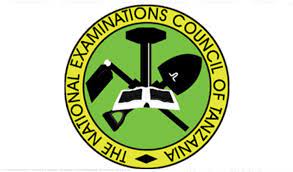FORM FIVE SELECTIONS 2021** FORM 5 JOINING INSTRUCTIONS
Get Help To Apply for University and Loans
COASTAL PROCESSES
Background information
The coastal processes
include all natural processes that operate in a region covered by coastal
waters and shore
The
importance of coastal zone is the availability of the following resources:
i)
Sources of minerals, oil, coal, and aggregates for
construction
ii)
In shore food (fish, seaweed, crustacea, etc): Coastal waters
are the most productive and bio-diverse areas of the seas almost 90% of the
global fish catch comes from coastal waters
iii)
Major recreational environments and tourism
iv)
Areas suitable for land reclamation, farming, settlements
and shipyards. The coastal lands are
intensely populated with about 60% of the world’s human population lives within
100 km of the coast
Geomorphic
agencies
The
agencies operating at the coastal zone are:
i)
Tides
ii)
Waves
iii)
Currents
iv)
Storms and tsunamis
Tides
Tides are result of gravitational pull of the moon and the sun
on the earth. Both land masses and oceans experience pull
effect. However, water responds quickly and at greater magnitude than the
landmasses. This gravitational pull causes periodic rises and falls of the sea
level. This phenomenon occurs twice
daily. The rise in the sea level causes
increase in vertical height of water, a condition that favours waves to attach
the coastal areas.
When the sun, moon and earth are aligned, a
phenomenon that took place at new and full moon periods, the coastal area
experiences SPRING TIDES. When the moon and the sun are at right
angle with the earth, the coastal area experiences NEAP TIDES. The pull is more during springtides due to the
effect of the moon and the sun that reinforce each other as compared to when
there are neap tides where they oppose each other. Spring and neap tides are experienced after
every two weeks, which is approximately 14¾ days.
Waves
Waves are normally generated by wind (Fig.4.2). They are
propagated in the direction of the wind. The
waves increase in height (size) with wind strength and duration. During storm,
wave heights at the coast may reach up 15m.
Waves
are of two types:
i)
Sea
waves – locally generated by wind
ii) Swell waves: Lower and longer waves that travel far from the area of their generation. When travelling longer period waves absorb those
with shorter period thus producing regular sinusoidal waves called swell waves.
Swell waves are capable of travelling thousands of km across the ocean without
losing much energy.
The
waves are responsible for erosion and formation of beach features by adding and
removing sediments from the swash zone. The waves are also responsible for
generating coastal currents that drift the sediment along the beach. At shallow
water, the speed of water at the bottom is high, as such sand and shingles are
moved followed with coarse sediments.
Normally
the waves break as approaching the shoreline. Once the waves break, energy is
released as turbulent swash runs up
to the beach carrying sediments. The water running back is called backwash. The volume of backwash is
always less than swash water. This is
due to part of the backwash water percolates in porous beach sediments. The
work done by backwash and swash is to adjust the beach slope until it is in
equilibrium with the forces acting on it.
Alternating periods of storms and calms
cause beach slope to change repeatedly. Some of the waves near the beach are
refracted in the direction of the shoreline. The currents produced by the
lateral movement of water are known as longshore currents. These
currents are responsible for moving beach sediment diagonally to the shoreline.
The movement of sediment is known as longshore drift, which is
distinct from the beach drift that operates on land at the beach. The beach
drift is the lateral movement of sediments on a beach when the angles of swash and backwash differ. The
combined movement of sediment via longshore drift and beach drift is known as littoral drift. The sediment
transportation direction is therefore largely governed by the direction of
dominant waves. The longshore currents play fundamental role in influencing
local patterns of erosion and deposition of sediments along the coast.
The
energy (E) brought by waves at the beach is a function of wave height (h) (Fig.
4.2) and water density (r).
E = 1/8
rgh2 Where g is the acceleration due to gravity
The
deep water waves with the height to length ratio exceeding 0.025 are likely to
be destructive whereas those with smaller ratios are constructive. The plunging breakers form little swash but
create high backwash and are therefore likely to be destructive.
i)
Spilling
ii)
Plunging More destructive
iii)
Surging



0 Comments